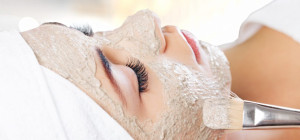 Innumerable factors impact the appearance of the face. Genetics influence different aspects, including nose shape, the angles of the jaw and forehead, eye color, plumpness of cheeks and skin tone. Age plays a critical role in the shaping of the jaws as well, as do environmental factors such as chewing habits and any facial injuries sustained.
Innumerable factors impact the appearance of the face. Genetics influence different aspects, including nose shape, the angles of the jaw and forehead, eye color, plumpness of cheeks and skin tone. Age plays a critical role in the shaping of the jaws as well, as do environmental factors such as chewing habits and any facial injuries sustained.
Age and Facial Appearance
Eight weeks into the gestational period, the human embryo has reached the point of development at which the structures of the head and face are formed. The soft tissues that become bones continue to grow every day leading up to birth, continuing to expand, harden and change shape as the infant ages. Contrary to popular belief, the bones that compose the cranium and jaw do not stop changing at a certain age. In fact, studies that focus on the shape of the jaw bones in relation to the entire face have shown considerable differences between CT scans of skull structures in subjects as little as 25 years apart. Structural differences seen in older skulls include:
- A lengthened jaw
- Loss of bone volume, creating a sagging or hollow appearance in cheeks
- Teeth are worn considerably, flattening the lip line and widening the face
- Chin may protrude while teeth begin to face inward
- Reduction in brow angle
- Widening of eye socket, pushing jaw angle down and out
The maxilla and mandible, or upper and lower jaw, and the changes that they undergo as time passes can drastically alter facial appearance. Other determining factors, however, tend to comprise the ways in which jaw structure affects aesthetics overall.
The Effects of Facial Trauma and Other Injury
The most common jaw injury involves the fracturing of one or more portions of the maxilla and/or mandible. Though the prognosis for patients with this injury is generally very good and severe permanent damage is uncommon, the injury does hold the risk for long-term effects if not treated promptly and properly. Facial pain, difficulty moving the jaw normally and noticeable deformity of the face may occur if a qualified oral and maxillofacial surgeon does not repair the fractures. Any injury to the bones or tissues of the face presents the risk of future complications, so it is important to seek immediate medical attention even if the injury seems minor initially.
Lifestyle, Habits and Conditions
Some of the most common contributing factors to changes in face shape over time are habits, lifestyle choices and oral conditions. Advanced periodontal disease, for example, may lead to the loss of multiple teeth in both jaws. Depending on the location of the missing teeth, the lower jaw may begin to drift over time or lips and cheeks may become sunken. On the other hand, the extraction of wisdom teeth may subtly alter the shape of the face in a positive way, slimming the jaw line throughout its curve from the temple to the cheeks. Bruxism, or the persistent grinding of the teeth and clenching of the jaw, often leads to an overdeveloped masseter muscle. This muscle is partially responsible for the movement of the mandible and can grow in size over time due to being overworked, typically while they are asleep. The result is a square, masculine-looking jaw line. Treatments for conditions such as bruxism and TMJ may help to prevent these visible effects and complementary cosmetic procedures, such as Botox injections, may help to reverse certain noticeable changes.
Shanna Cramer contributes to blogs on oral surgery, cosmetic surgery, graphic design and web design.







